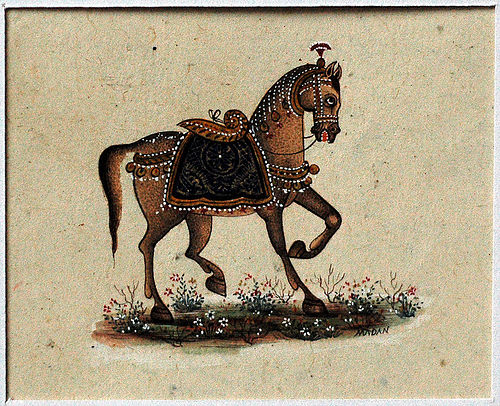The wisdom of dressage has come to us over many centuries. There are literally thousands of masters and hundreds who have written about dressage. So many visions based on so much experience with horses, by minds who were both brilliant and profound.
While the depth of these teachings over the centuries may strike the student of dressage as overwhelming, it is far better to be overwhelmed than to shrink down and dumb down the teachings into just a few lineages of masters.
Modern dressage, as it is commonly presented, is a shrinking down and dumbing down of a very broad and rich field of knowledge. It is a rare student of dressage who has cultivated an appreciation of the broader field. Instead, most of us are spoon fed on this dumbed down “instant” dressage, completely unaware of that this has happened. This has been done for us by countless faceless teachers, trainers and instructors who are promoting their own agendas usually for the “good” of the sport as they see it.
These ancient wisdoms, however, can show us that there is a path, a way to work with the horse, and can point to how the human-horse relationship can work in an enlightened way. We do not need to search endlessly to reinvent the wheel or to concoct our own recipes while inventing a “new” dressage, but we do need to explore the field of history in order to find value and illumine in our current practice.
We also need to explore our own inner landscape and find ways of understanding the horse which enable us to find harmony with the horse. It is not about attaching to a particular lineage but about opening our minds to the great field of knowledge before us. To penetrate into the teachings deeper, at some point, means that we concentrate our efforts on one lineage but that time should be after we have cultivated some wider view.
Much of the ancient teaching arise from military training of the horse and rider, but dressage is not war nor is about war. Dressage is about as far from a war as one can get in its core practices. It is about peace and harmony or how to be the kind of warrior who has risen far above the use of aggression as a solution to problems. If and when aggression is used to resolve conflicts both sides in the conflict are destroyed and so in the end no one really wins.
Keeping this in mind is to acknowledge the flaws of the military mind which seeks to implement solutions through conflict. The mastery of military thought is to not engage in battle in the first place. That is the point of a true warrior. A true warrior has cultivated the wisdom to know how to rise above conflicts and finds a deeper peace. The culmination of the military mind is to provide a foundation of strength in which peace always prevails.
So it is that in our dressage, the best seat is one that the horse would never challenge. It is not to be able to sit the buck and bolt but to never have the challenge occur. We do not need to dominate the horse, but we do need to dominate ourselves to remove the behavior in us which would support conflict.
Many students of dressage have realized the basic rhythm and energy found in the work. Our obligation to our horse is in finding through study, the joy and fascination when we are able to touch and join in the energy which comes from a vibrant and healthy relationship with the horse. Such an understanding finds dignity and kindness which lifts us beyond aggression and conflicts. We learn to step beyond fear and aggression, not by avoidance but by seeing what it there and learning to work with our fears.
This leads us to considering the wisdom which extends through all the equestrian lineages and we find the truth which is beyond individual teachers or teachings. We find a kindness and gentleness which is the fruition of equestrian education and culture. This is finding the golden dressage which is both brilliant and profound which exists right now, right at this moment and is only waiting for you to discover it.


Recent Comments